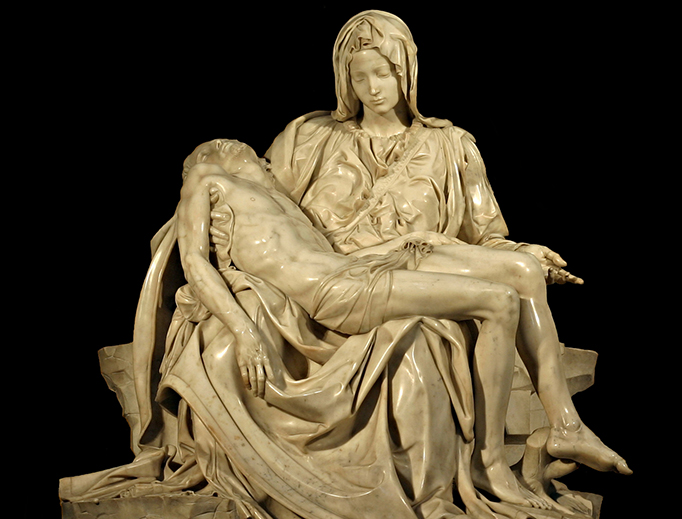Our Lady of Sorrows, Pray For Us!
‘From Mary,’ says Pope St. John Paul II, ‘we learn to trust even when all hope seems gone’

I read a lot of novels when I am pregnant. My brain cannot seem to absorb anything more intellectually substantive than imaginary characters. So, rather than being guilted by the piles of unread theological and historical books on my nightstand, I pack away my meatier tomes and delve into my shelves of fiction.
Last week I completed Charles Dickens’ Nicholas Nickleby. Like in most of his works, the novel’s characters endure an inordinate amount of suffering and their fates differ only as far as they respond to their respective hardships. The heroes choose to face their grief with courage and hope; thus their suffering bears bountiful fruit. Meanwhile their villainous counterparts wallow in their misery, seeking revenge; consequently their pain is wasted.
Suffering, and our response to it, is a fitting theme to ponder in September, the month when Catholics remember in a particular way the Seven Sorrows of Mary, and reflect upon her Immaculate Heart pierced with grief.
Throughout the liturgical year we honor Mary above all other saints because of her great role as the Theotokos, the bearer of Christ and the Queen of Heaven. But this month, and especially on the feast of Our Lady of Sorrows, we focus on her life as a suffering mother. The Mother of God, the ultimate heroine of salvation history, suffered more than any other human woman on earth. Because of her unconditional fiat, she bore the uncertainty of a virgin pregnancy followed by a perilous flight to Egypt. Thirty years later she watched her beloved Son leave their home and embark on his ministry, allowing herself to fade into the background. Within three more years she sat at the foot of the Cross, cradling his bloodied body.
The most famous image of this scene, Michelangelo’s breathtaking Pietà, shows Mary’s heartbreak as she holds her dead son. But it also shows her heroic attitude of suffering. The Blessed Mother sits, one hand gently supporting Jesus’s body on her lap while the other extends upward in a silent pose of deliberately chosen acceptance. She has been asked to bear this tremendous sacrifice on account of humanity’s sin, and she does so as trustingly as she received Gabriel’s announcement 33 years prior.
Delivering a homily in 1979, Pope St. John Paul II said: “From Mary we learn to surrender to God’s will in all things. From Mary we learn to trust even when all hope seems gone.”
God does not ask us to passively accept the suffering we face in our broken world. He wants us to look to Mary and respond as she did. Christ’s Mother did not waste a moment of her sorrow in self-pity, nor did she merely bear her pain with passive resignation. She actively participated in the cross she was given, uniting her suffering to God’s will and trusting that He would bring forth beauty from the mire of grief. She used her free will and chose to trust in his Providence and hope in his promise, even as she gazed at the darkness of death itself in her Son’s face.
In his famed “Ballad of the White Horse,” GK Chesterton wrote:
He saw Our Lady stand,
Her eyes were sad withouten art,
And seven swords were in her heart —
But one was in her hand.
Mary suffered greatly, but she was not powerless in her pain. She deliberately turned to God drawing strength from her unwavering trust in him, and therefore could not be vanquished. God desires no less for us.
Our Lady of Sorrows, pray for us!
- Keywords:
- our lady of sorrows
- seven sorrows

















